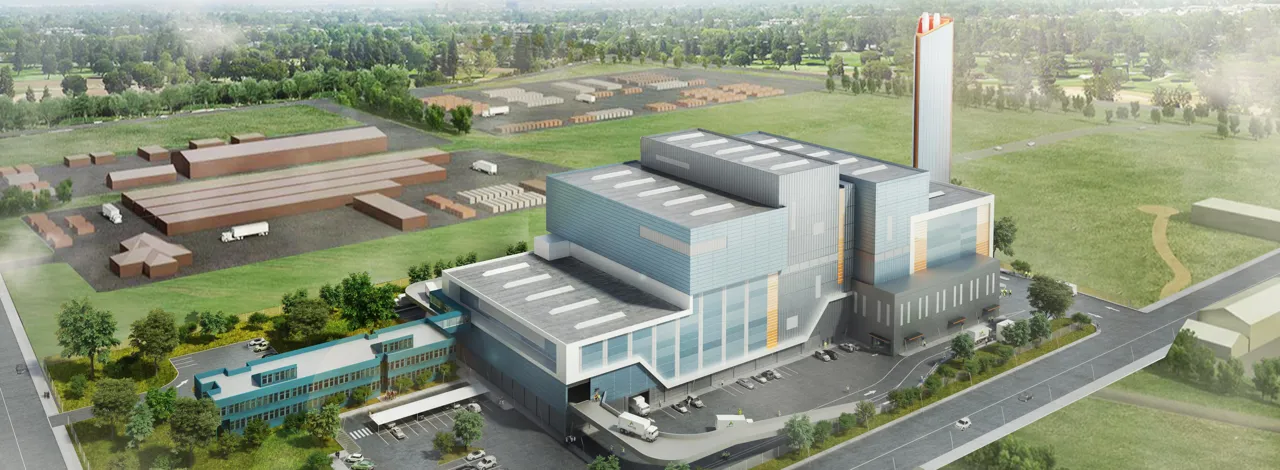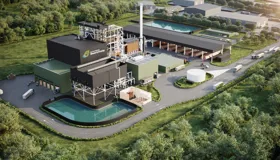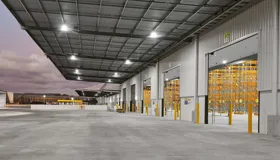
Kwinana EfW plant targets household, commercial, industrial waste
From red bin waste to greener power
Australia’s first large-scale energy from waste project – a 38 MW plant at Kwinana in Western Australia – is expected to power more than 50,000 homes using household waste, contributing to the grid stability of the South West Interconnected System.
$90m
CEFC finance
38 MW
generation capacity
~400,000
tCO2-e annual abatement
ACCIONA is delighted to be playing such an important role in the delivery of Australia’s first waste-to-energy facility – a vital asset that will deliver critical waste management infrastructure and sustainable energy to Western Australia.Bede NoonanChief Executive Officer, ACCIONA Australia
Our investment
The CEFC committed up to $90 million to support the development of a major energy-from-waste (EfW) project at Kwinana in Western Australia.
The CEFC finance was repaid in March 2024. The Avertas Energy plant was a co-development between Macquarie Capital and Phoenix Energy owned by Macquarie Capital and Dutch Infrastructure Fund.
The CEFC finance was part of a $400 million senior debt syndicate that also included SMBC, Investec, Siemens, IFM Investors and Metrics Credit Partners. The Australian Renewable Energy Agency (ARENA) contributed $23 million in grant funding.
Spanish infrastructure company ACCIONA, which had been leading construction of the project, purchased the plant from Macquarie Capital and Dutch Infrastructure Fund, using a Sustainability-Linked Loan in March 2024.1
ACCIONA has said the plant, once operational, would divert up to 460,000 tonnes of waste from landfill a year and deliver 38 MW capacity of baseload power to the Western Power Grid. which is enough to power more than 50,000 households.2
1 Media release: Herbert Smith Freehills advisers international lender syndicate on A$550m sustainability-linked loan for waste-to-energy project 2 Media release: ACCIONA acquires Kwinana Waste-to-Energy Facility
our impact
Australia’s dynamic waste system
Australia’s recycling and resource recovery sector is undergoing considerable transformation, driven by global market pressures, evolving consumer preferences and an increased focus on cutting our carbon footprint.
However, Australia’s waste production is increasing. The National Waste Report 2022 found that Australia produced about 76 million tonnes of waste in 2020-21, almost three per cent more than in 2018-19, while recycling rates had remained stagnant at 60 per cent.3
Better waste management is central to Australia’s transition to net zero, with energy from waste generation providing the opportunity to cut landfill volumes and emissions while generating reliable clean energy.
The CEFC supports the ‘reduce, reuse, recycle’ recommendations of the international waste hierarchy and focuses on projects that seek to make a material reduction to Australia’s waste-related emissions.
A solution with a proven track record
The Kwinana plant has secured long-term supply contracts for the majority of its waste requirements from local councils including the Rivers Regional Council and the City of Kwinana.
By processing household waste from local councils, it will produce cost-competitive baseload renewable energy. It is also expected to reduce CO2-e emissions by more than 400,000 tonnes per year – the equivalent of taking 85,000 cars off the road.
The Kwinana plant will use technology that already has a strong track record in Europe and meets strict environmental requirements. The thermally-treated waste heats water into steam to produce electricity, with metals recovered for recycling and other byproduct materials suitable for reuse in the construction industry. The plant was connected to the Western Power grid in August 2023.4
3 National Waste Report 2022
4 Avertas Site Progress report November 2023




